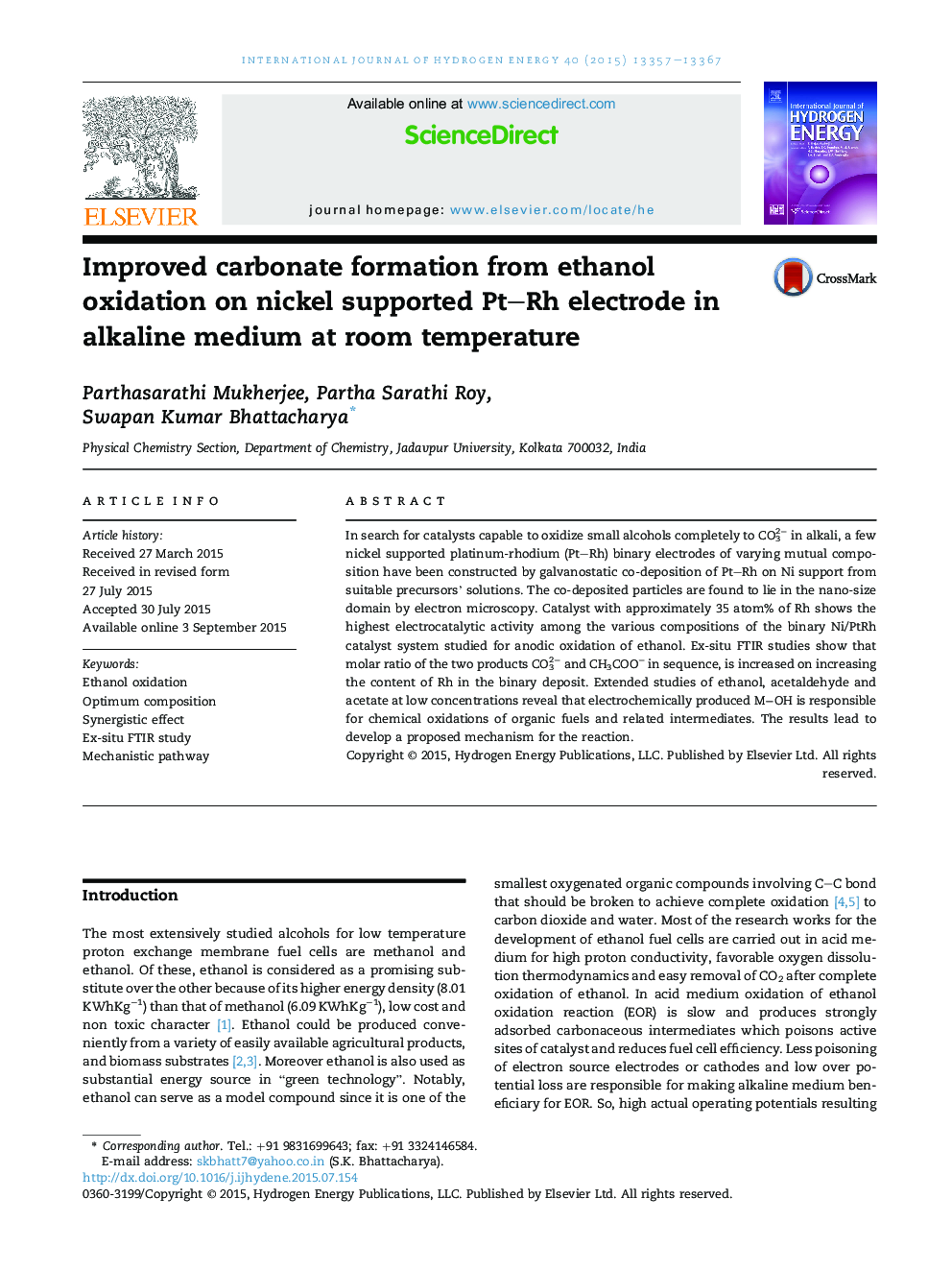| کد مقاله | کد نشریه | سال انتشار | مقاله انگلیسی | نسخه تمام متن |
|---|---|---|---|---|
| 1274629 | 1497434 | 2015 | 11 صفحه PDF | دانلود رایگان |

• Increased C–C bond breaking ability of PtRh electrocatalyst
• Ca.35 atom% of Rh shows best electrocatalytic activity for ethanol oxidation.
• Ethanol is oxidized to carbonate through acetaldehyde and acetate intermediates.
• Proposed path of ethanol oxidation.
In search for catalysts capable to oxidize small alcohols completely to CO32− in alkali, a few nickel supported platinum-rhodium (Pt–Rh) binary electrodes of varying mutual composition have been constructed by galvanostatic co-deposition of Pt–Rh on Ni support from suitable precursors’ solutions. The co-deposited particles are found to lie in the nano-size domain by electron microscopy. Catalyst with approximately 35 atom% of Rh shows the highest electrocatalytic activity among the various compositions of the binary Ni/PtRh catalyst system studied for anodic oxidation of ethanol. Ex-situ FTIR studies show that molar ratio of the two products CO32− and CH3COO− in sequence, is increased on increasing the content of Rh in the binary deposit. Extended studies of ethanol, acetaldehyde and acetate at low concentrations reveal that electrochemically produced M−OH is responsible for chemical oxidations of organic fuels and related intermediates. The results lead to develop a proposed mechanism for the reaction.
Figure optionsDownload as PowerPoint slide
Journal: International Journal of Hydrogen Energy - Volume 40, Issue 39, 19 October 2015, Pages 13357–13367